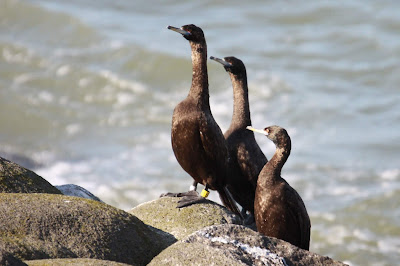Having taken the Alaska Express, with again no sign of David Cartier, from Fairbanks as far as Denali, for a 2 days stop over, it was then onto the mighty
McKinley Explorer
to complete that 260 miles part of the jaunt to Anchorage.
No delays there except for a delicious fish dinner and a good night's sleep
before boarding the relatively small aircraft which would take us eventually to
SAINT PAUL ISLAND
(⅔’s of the way the east coast of Russia and most northerly of the 2 small islands below the key)
deep into the
BERING SEA
and one of the most remote places ever visited.
and one of the most remote places ever visited.
The word 'eventually' was used above as there was to be a 1 hour 30 minutes stop over in
NOME
which seemed to be something of a bugbear to the vast majority but there was to be a
Massive Wildlife Bonus.
As the aircraft lost height prior to landing a huge pod of
Massive Wildlife Bonus.
As the aircraft lost height prior to landing a huge pod of
BELUGA WHALES
could be seen in the estuary below. With the aid of the ever present binnoculars
even the eye-balls of these fantastic creatures (never encountered before) could be seen.
could be seen in the estuary below. With the aid of the ever present binnoculars
even the eye-balls of these fantastic creatures (never encountered before) could be seen.
First sight of Saint Paul Island
with a fluctuating population of about 500
with a fluctuating population of about 500
On landing I got so mesmerized by the

GREY-CROWNED ROSY FINCHES
that all sense of time and place seemed to have disappeared.
Turning the airfield and arrivals lounge were empty of people
but never fear Forest Rowland turned up appologising for being a little late!
He, a most well thought of ornithologis in the US was to be my guide for the next 4 days,
however from here we will turn over to a pictorial else we'll never get finished.
Asked if I wanted to head to the target bird first, which had been on station for some days, it was decided to strike while the iron was hot, but in slow time so we could enjoy much along the way.
First port of call was the
First port of call was the
the only Plant name remembered
PELAGIC CORMORANT
What the Americans call
RED PHALAROPE
as they usually see them in breeding plumage
and which we named Grey, I think the Yanks should have it
male and female
LAPLAND BUNTING
We have a good number more images to post, but for now we take a short break.


























